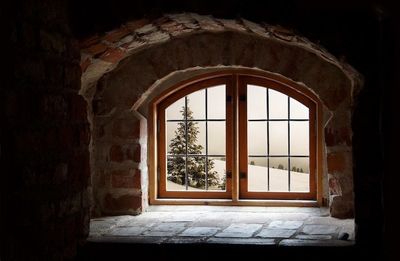Written by contributor Katie Kimball of Kitchen Stewardship.
As we head full steam into holiday baking season, you may be pulling out cookie sheets and other pots and pans that haven’t seen much action in a while. Will you know if you’re making a safe, non-toxic kitchen choice?
Here’s a quick primer to help you out as you navigate your back cupboards, or perhaps the cooking landscape at a relative’s house while visiting.
Five Safe Materials for Cooking and Baking
I can’t promise that all of these are 100% perfectly safe, but they’re the safest options available.
1. Glass

Glass baking dishes and even pots are non-reactive, which means they won’t leach chemicals into your food. Score one for glass. They’re also great for storage if you can find some with lids, which saves dishes. Score two.
However, there have been some reports of glass bakeware exploding when heated, especially if a dish goes from the freezer to the oven.
Strike one for glass.
But generally, under normal use, properly made glass dishes have no safety problems. If you’re worried about the exploding glass issue, you may want to Google the Pyrex incident to see if your dishes were made in the safe zone (by year).
2. Stoneware

Picture above: soaked granola from my eBook, Healthy Snacks to Go, on my Pampered Chef baking stone.
Pampered Chef isn’t the only brand selling stoneware, but they seem to be the most well-known. Stoneware is also non-reactive and won’t leach chemicals into your food, and I have to give it a personal shout out for preserving many a cookie and biscuit in my house from burnt bottom syndrome.
Possible disadvantages to stoneware include:
- Can’t use soap – that turns some people off. For me, it’s just an excuse not to wash the baking stones when I don’t get them very messy!
- Pricey – but don’t go cheap, as thin stones often break quickly.
3. Ceramic or enameled cast iron
 Photo by Grannie’s Kitchen
Photo by Grannie’s KitchenRegular cast iron is often well-loved for the stovetop. It does leach iron into your food, but that only helps most people’s iron levels. Enameled cast iron (top photo) is a way to harness the conductivity of cast iron and yet be able to use some soap (although sparingly) and avoid the problem of acidic foods reacting with the cast iron.
Ceramic bakeware has a similar coating to enameled cast iron, and in both, you need to make sure it’s lead-free. Don’t use older enameled baking dishes as they may contain cadmium or lead, which can easily get into your food. When buying new, check with the manufacturer to ensure lead-free materials.
4. Stainless steel
There are some questions about stainless steel possibly leaching nickel, but it’s generally regarded as non-reactive, especially if you’re not storing acidic food in it. (So don’t put your tomato-based chili in the refrigerator still in the pot.) Many eco-friendly shops sell stainless steel cookie sheets, pizza pans and loaf pans specifically to cater to the “safe materials” crowd.
5. Silicone baking mats
A rather new player in the field, silicone’s major transgression – and it’s a big one – is that there haven’t been enough tests run on it for safety and leaching issues. Generally silicone is regarded as inert and non-reactive. Many folks dislike the baking quality of silicone bakeware like brownie pans, muffin tins, and loaf pans, but the baking mat might still have its place in my kitchen.
See my article on silicone bakeware safety for the research I could come up with for your holiday baking season pleasure.
What Not to Use
In case you aren’t sure about what to look out for when you’re in Grandma’s kitchen deciding what pot to heat the turkey gravy in or how to bake the crescent wheels, you want to avoid:

1. Aluminum – linked to Alzheimer’s and other not-so-fun things, aluminum is unfortunately ubiquitous in older pots, muffin tins and cookie sheets. You really mustn’t allow acidic foods (like tomato sauce) to hand out in aluminum as it will leach chemicals even faster.
Aluminum is not magnetic, so if you’re unsure after seeing a light-colored, lightweight metal, try to stick a fridge magnet to the pot to help identify the material.
The baseball mitt cake pan pictured above, which both my husband and son had for their second birthday, is probably made of aluminum. But like that white flour cake, I’m not going to stress too much about a once a year indulgence.
2. Nonstick surfaces – PFOA, a nasty chemical in Teflon and other black non-stick surfaces, offgasses at high temperatures. It’s one of those things that kills birds. Why bother? (Except maybe for scrambled eggs…)
It is impossible to be perfectly safe from all chemicals all the time, but it’s still nice to shoot for the “most likely safer” rather than the “kills birds” category.
What is your favorite piece of bakeware?


